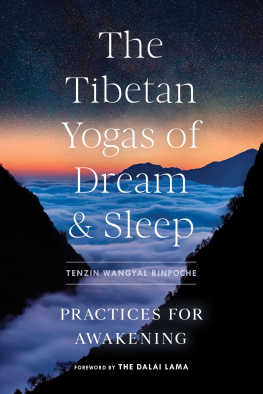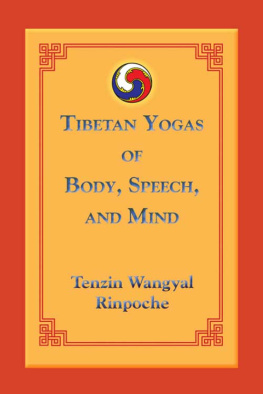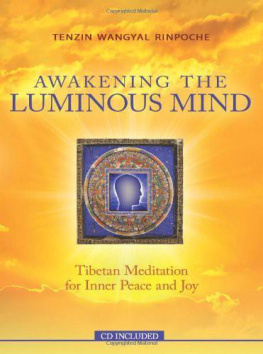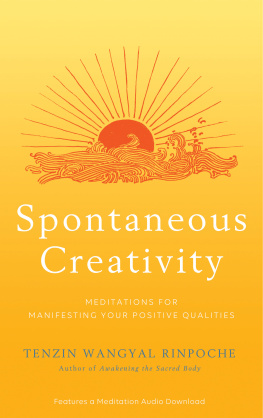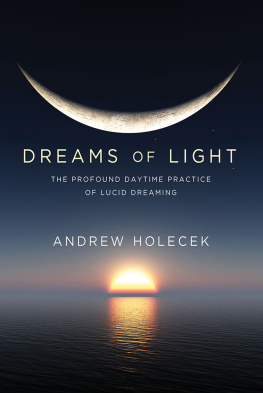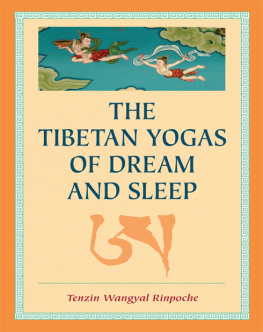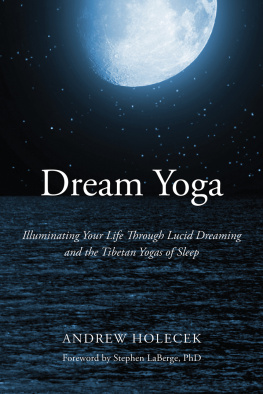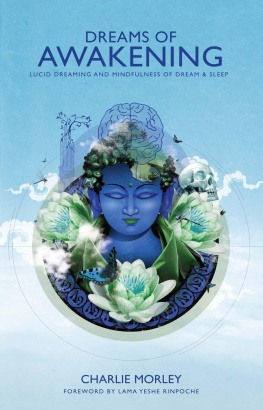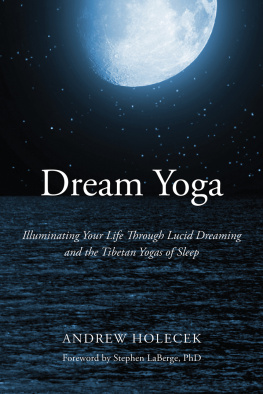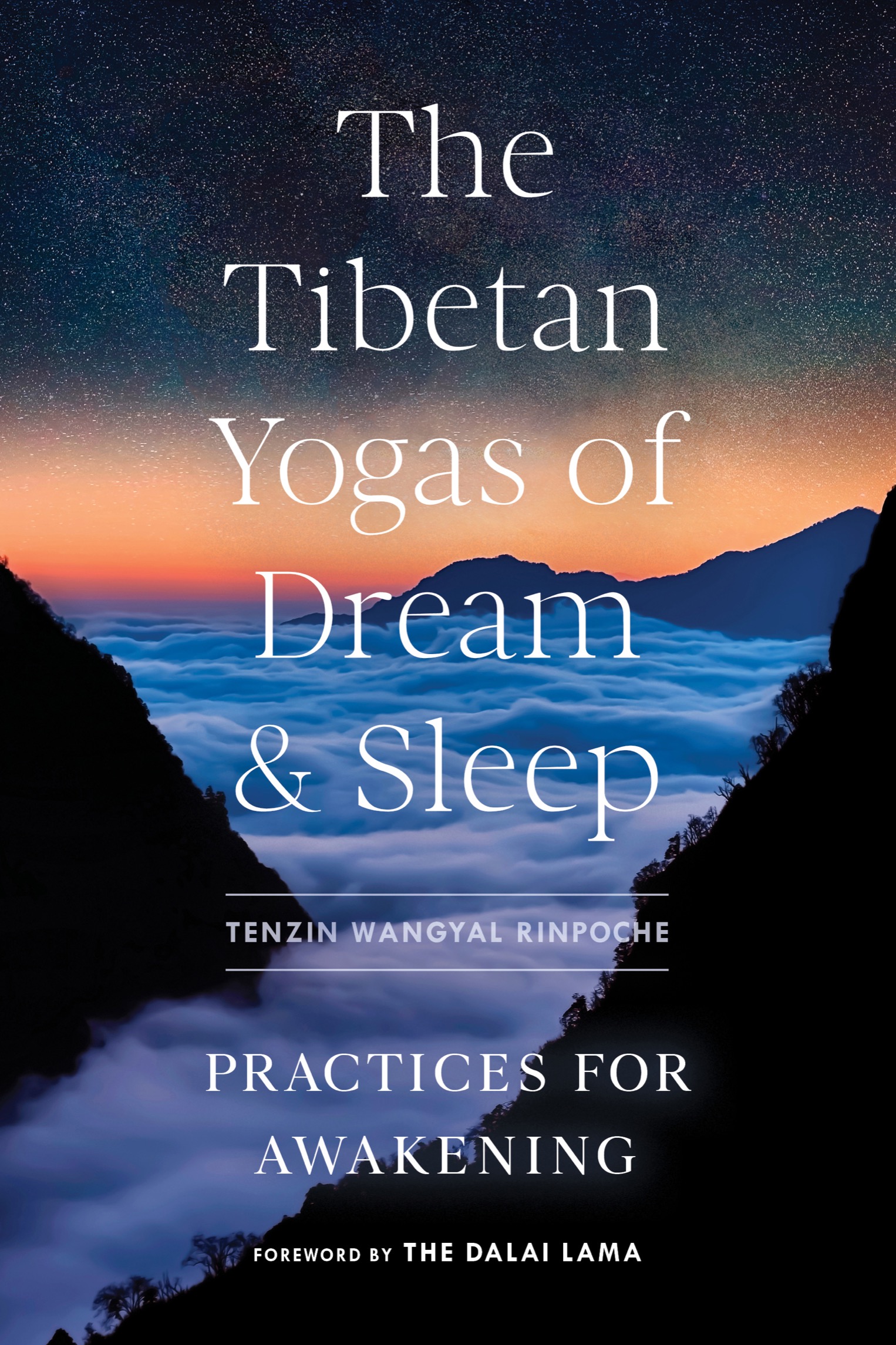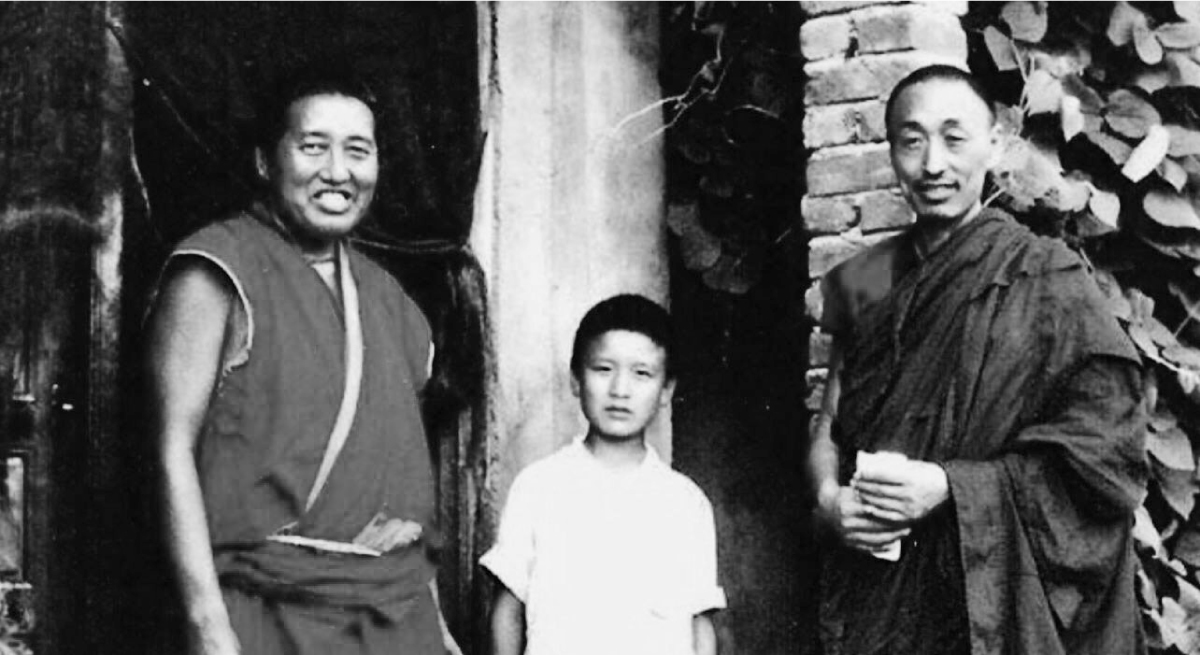Contents
Landmarks
Print Page List
Shambhala Publications, Inc.
2129 13th Street
Boulder, Colorado 80302
www.shambhala.com
1998, 2022 by Tenzin Wangyal
This second edition, published in 2022, has been revised and updated.
Cover photo: StockByM/iStock
Cover design: Daniel Urban-Brown
All rights reserved. No part of this book may be reproduced in any form or by any means, electronic or mechanical, including photocopying, recording, or by any information storage and retrieval system, without permission in writing from the publisher.
LIBRARY OF CONGRESS CATALOGING-IN-PUBLICATION DATA
Names: Wangyal, Tenzin, author. | Dahlby, Mark, editor.
Title: The Tibetan yogas of dream and sleep: practices for awakening / Tenzin Wangyal Rinpoche; edited by Mark Dahlby.
Description: Boulder, Colorado: Shambhala, [2022] |
Includes bibliographical references.
Identifiers: LCCN 2021042554 | ISBN 9781611809510 (trade paperback)
eISBN 9780834844568
Subjects: LCSH: YogaBon. | DreamsReligious aspectsBon (Tibetan religion) | SleepReligious aspectsBon (Tibetan religion)
Classification: LCC BQ7982.2 .W36 2022 | DDC 299.5/4dc23
LCrecord available at https://lccn.loc.gov/2021042554
a_prh_6.0_140788416_c0_r0
This book is dedicated to Namkhai Norbu Rinpoche, who was a great inspiration in my life, both in how I teach others and in my own practice.
Books by Tenzin Wangyal Rinpoche
Awakening the Luminous Mind
Awakening the Sacred Body
Healing with Form, Energy, and Light
Spontaneous Creativity: Meditations for Manifesting Your Positive Qualities
Tibetan Sound Healing
The True Source of Healing: How the Ancient Tibetan Practice of Soul Retrieval Can Transform and Enrich Your Life
Unbounded Wholeness: Dzogchen, Bon and, the Logic of the Nonconceptual (with Anne Carolyn Klein)
Wonders of the Natural Mind
Editors Preface to the Second Edition
In 2020, early in the COVID-19 pandemic, Nikko Odiseos of Shambhala Publications sent an email to Tenzin Wangyal Rinpoche suggesting a second edition of The Tibetan Yogas of Dream and Sleep, perhaps with some new material or a new chapter. It grew into something more during the rewrite.
The first edition grew from oral teaching Rinpoche gave in California and New Mexico and was written over several years, starting in the midnineties. It was published by Snow Lion in 1998 and has been translated into twenty-five languages and more have been requested.
The second edition incorporates teachings given through online retreats to participants in several countries during the pandemic, in 2020 and 2021.
Tenzin Wangyal Rinpoche began teaching in the West in 1988. Since, he has taught thousands of students, both in person in many countries and, increasingly, online to reach students in different parts of the world, in different time zones, and speaking different languages. The essence of Rinpoches teaching is Dzogchen; that has not changed. But over time, in response to his students questions, he has adjusted how he articulates the teachings to make them clearer and more accessible. That change has been integrated into this edition. Changes from the first edition are noted if they alter the steps of a practice or need explanation. Other than correcting punctuation and word usage, no changes were made to the sleep yoga section.
The first use of most Tibetan and Sanskrit words are italicized, indicating they will be found in the improved glossary at the end of the book.
M.D.
Preface to the First Edition
A well-known saying in Tibetan states, One should explain the lineage and history to cut doubt about the authenticity of the teaching and the transmission. Therefore, I begin this book with a short story of my life.
I was born not long after my parents fled the Chinese oppression in Tibet. Conditions were difficult, and my parents placed me in a Christian boarding school, where they hoped I would be cared for. My father was a Buddhist lama, my mother a practitioner of Bn. Sometime after, my father died. Eventually my mother remarried a man who was a Bn lama. Both he and my mother wanted me to live within my culture, so when I was ten years old, I was taken to the main Bn monastery in Dolanji, India, and ordained as a monk.
After living in the monastery for some time, I was recognized by Lopon (Head Teacher) Sangye Tenzin Rinpoche as the reincarnation of Khyungtul Rinpoche, a famous scholar, teacher, author, and meditation master. He was well known as a master astrologer. In western Tibet and northern India, he was famous as a tamer of wild spirits and was widely sought after as a healer with magical abilities. One of his sponsors was a local king of Himachal in northern India. The king and his wife, unable to bear children, asked Khyungtul Rinpoche to heal them, which he did. The son they bore and raised, Virbhadra Singh, became the 4th Chief Minister of Himachal Pradesh.
When I was thirteen, my kind root master, Lopon Sangye Tenzin, a man of great knowledge and realization, prepared to teach one of the most important and esoteric teachings in the Bn religion: the Great Perfection (Dzogchen) lineage of the Oral Transmission of Zhang Zhung (Zhang zhung nyan gyud). Even though I was still young, my stepfather visited Lopon Rinpoche and asked that I be admitted to the teachings, which would take place every day for three years. Lopon kindly agreed but asked that I, along with the other prospective students, bring him a dream from the night before the teachings were to begin so that he might determine our readiness.
Some of the students remembered no dream, which was considered a sign of obstacles. Lopon had them begin purification practices and delayed the beginning of the teaching until each student had a dream. Dreams of other students were taken as indications that they needed to do particular practices to ready themselves for the teachingsfor example, doing practices that strengthened their connections to the Bn guardians.
I dreamt about a bus circumambulating my teachers house, although there is actually no road there. In the dream, the bus conductor was my friend, and I stood beside him, handing out tickets to each person boarding the bus. The tickets were pieces of paper with the Tibetan syllable A written on them. That was in the second or third year of my education at Dolanji. At the time I didnt know A was a symbol of major significance in Dzogchen teachings.
My teacher never said anything about the dream, which was his way. He made little comment about what was good, but I was happy as long as I was allowed to go to the teachings.
It is common, in Tibetan spiritual traditions, for the dreams of students to be used by the teacher to determine if it is appropriate for a student to receive a particular teaching. Though it would be some time before I began to study and practice dream yoga, this incident was the beginning of my interest in dreams. It strongly impressed on me how greatly dream is valued in Tibetan culture and in the Bn religion, and how information from the unconscious is often of greater value than information the conscious mind can provide.
Tenzin Wangyal Rinpoche, ten years old, with H.E. Yongdzin Lopon Tenzin Namdak Rinpoche and H.H. Lungtok Tenpai Nyima, the 33rd abbot of Menri Monastery

